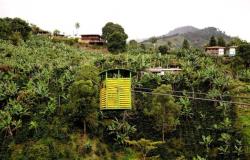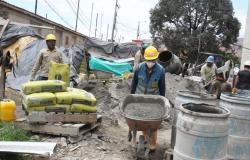An oil businessman convinced the shareholders of the firm he integrates to initially invest US$200 million in the country to acquire the Mata Mora unconventional concession, in Neuquen. Some time later they invested another US$110 million to buy the license to Confluence, another Vaca Muerta site, bordering Mata Mora, but in Río Negro. Both places have a total area of 500 square kilometers and produce 13,000 barrels of oil per day.
Pablo Bizzotto was executive vice president of Upstream at YPF during Galuccio’s time and worked for 13 years at Pan American Energy (PAE), owned by the Bulgheroni family; Today he leads Phoenix Global Resources, which is expanding in Argentina
Marco Dunand and Daniel Jaeggi founded in 2004 Mercuria Energy Groupone of the world’s largest independent energy companies, headquartered in Switzerland and with gross revenue of US$140 billion. In 2014 the company purchased the marketing unit of commodities from the bank JP Morgan Chase for US$3,500 million. A few years before, in 2009, she made her first foray into Argentina, under the name El Trébol oil company. Shortly after, they merged with a local company, Andes Energy, and so it was born Phoenix Global Resources.
After 10 years of adaptation to the local market, the company’s activity took a turn when the businessmen called, in the middle of the pandemic, the Argentine Pablo Bizzottowho at that time He was executive vice president of Upstream from YPF, to lead the company in Argentina.
Bizzotto has a long career in the oil sector. After working for 13 years at Pan American Energy (PAE), oil company founded by the family Bulgheroniin 2014 he was recruited by the then president and CEO of YPF Miguel Galuccio to develop Dead cow.
The Petroleum engineer settled in Neuquén, in the Loma Campana siteand witnessed the drilling of the first horizontal wells, which today are characteristic of unconventional production, but at that time They were a milestone in Argentina.
Bizzotto convinced shareholders to initially invest US$200 million in the country to acquire the Mata Mora unconventional concession, in Neuquen. Some time later they invested another US$110 million to buy the license to Confluence, another Vaca Muerta site, next to Mata Mora, but in Río Negro. Both places have a total area of 500 square kilometers and produce 13,000 barrels of oil per day.
The company also has other mature assets in Mendoza and produces a total of 16,000 barrels per day. Since 2020, it has invested US$550 million in the country and has 90 employees.
“phoenix It was a company listed on the London and Buenos Aires stock exchanges. Then, with the increase in Mercuria’s participation, it was decided to make it a private company and it was delisted. “That gave us a different dynamism and a very great agility in decision-making, due to the daily relationship with the majority shareholder, who is the one who finances all the activity,” says Bizzotto, in an interview with THE NATION.
Another of the company’s shareholders is the former Minister of the Interior José Luis Manzano, founder of Andes Energía. Currently, it has 6% of the total shareholding.
The company also has an agreement with Misiones to sell carbon credit to multinational companies. This allows the province to invest in reducing deforestation and forest degradation.
–Why did the main shareholders choose to invest in Argentina?
–Argentina always arouses a lot of interest because of the potential it has, which is gigantic and almost has no limits. One could invest in mining, oil and gas, because it has a massive amount of natural resources, accompanied also by a very good quality of human resources. It is a country that has no social problems and the resources are in places where there are no large urban settlements, like Vaca Muerta. The conditions are in place for this to unlock and grow at a different speed.
–How much are you going to invest?
–Between 2024 and 2026 we are going to invest US$1.1 billion. In 2024 we are at about US$250 million and next year we will exceed US$300 million, because we are going to begin the construction of an oil treatment plant. In December 2025 we should be erecting the second drilling rig (RIG) to begin filling the new plant, which will allow us to total a treatment capacity of about 40,000 barrels per day in Mata Mora. He hub Mata Mora-Confluencia, if one were to develop it without limits and if all the conditions were met, there should be four teams drilling and it should be reaching about 70,000 barrels per day of oil production.
–What are the conditions needed to accelerate investment?
–There are physical-technical conditions and there are country conditions. We could be erecting the second piece of equipment possibly sooner, because we can have the plant available sooner, but there is a limitation in transportation capacity, which makes it mandatory that the pipeline expansions that are being carried out be built. It is crucial for the growth of Vaca Muerta and for increasing exports.
–And the conditions of the country?
–Those of us who were lucky enough to be at the birth of Vaca Muerta we unrisk [le sacamos el riesgo] rock and technology. We understood how to develop Vaca Muerta efficiently, between logistics, evacuation and unions, which are not a problem today. Now missing unrisk to the country. This Vaca Muerta project in Uruguay or Chile would be an energy revolution. I believe that the Base Law, with the incentive regime for large investments (RIGI), is essential for us to go from trickle-down development to massive one. We must understand that this type of project has a window of opportunity, especially in oil, and we have a resource under the ground that we have to value as soon as possible. The approval of the RIGI and the chapters of the Base Law that are related to the oil and gas industry are essential for these conditions to occur and for us to move on to development at a different speed.
-Because?
–Companies in general have a global asset portfolio. When I ask my shareholder to finance a project in Argentina, he turns around and looks at all the assets he has. Vaca Muerta has to compete with other projects. And if the oil or the product that I sell does not have the international price, if the rules of the game change with taxes, if there is no certainty or a fixed framework in which the industry is going to move, it is very difficult to convince a shareholder from making a large investment. This is an industry that needs very long payback times, because it is capital intensive. It is essential to understand that we compete for the allocation of capital. When YPF associated with Chevron it became more competitive, because it forced it to compete for investments in Argentina. It forced us to be better and more efficient. The same thing happens to us. Mercuria has very attractive projects in countries that have conditions that are not very different from those proposed in the text of the Bases Law. These are normal conditions that any investor requires.
–Is the RIGI similar to the agreement that YPF and Chevron made?
–Yes, there may be differences, as in all projects, but the essence of both seeks two or three things. First, provide certainty in the long term of the fiscal and investment conditions, that is, the framework in which the project will be maintained over time. The product will have a price that will reflect the market value in the world, and the shareholder who takes risk, makes an effort, invests and brings investment to Argentina. He will want certain conditions of fluidity in the flow of capital, which is what happens in any normal country.
–Do you think the RIGI would be important if there were no exchange stocks, or if international prices were respected?
–The RIGI is mandatory, it is extremely necessary so that these large investments can be developed. I cannot imagine a company that wants to build a liquefied natural gas (LNG) plant without the support of a framework, as the RIGI tries to provide.
–There is talk that this year Argentina could have an energy trade surplus of US$6 billion. How much more could it be if there were other conditions?
–Recently, the president of YPF [Horacio Marín] He mentioned that in the coming years, with gas and oil projects, he expects income of more than US$20 billion annually. I think that is feasible, but we have a lot of work to do. The longer it takes us to generate the regulatory framework, the further we fall behind in executing the projects. Nobody places a purchase order for a plant if the law is not approved. From the moment the investment in the LNG plant begins until it is put into operation, five years pass. We have to generate that regulatory and financial framework of certainty, not for a government, but for the next generations.
Bizzotto is a Petroleum Engineer, graduated from the National University of Comahue. He has an MBA from the University of Barcelona and participated in the IAE Management Development Program. He entered the Young Professionals program of the Techint Group, in the Tecpetrol company. He then worked for 13 years at Pan American Energy (PAE). In 2014 he joined YPF to begin the development of Vaca Muerta. Since 2020 he serves as CEO of Phoenix Global Resources.
Sofia Diamondjournalist from LA NACION
Role: Editor She studied Economics at the Torcuato Di Tella University (UTDT) and completed the LA NACION Master’s Degree in Journalism at the same university.
Location:
Buenos Aires, Argentina
Areas of interest:
Economy and business
Languages:
Spanish English






